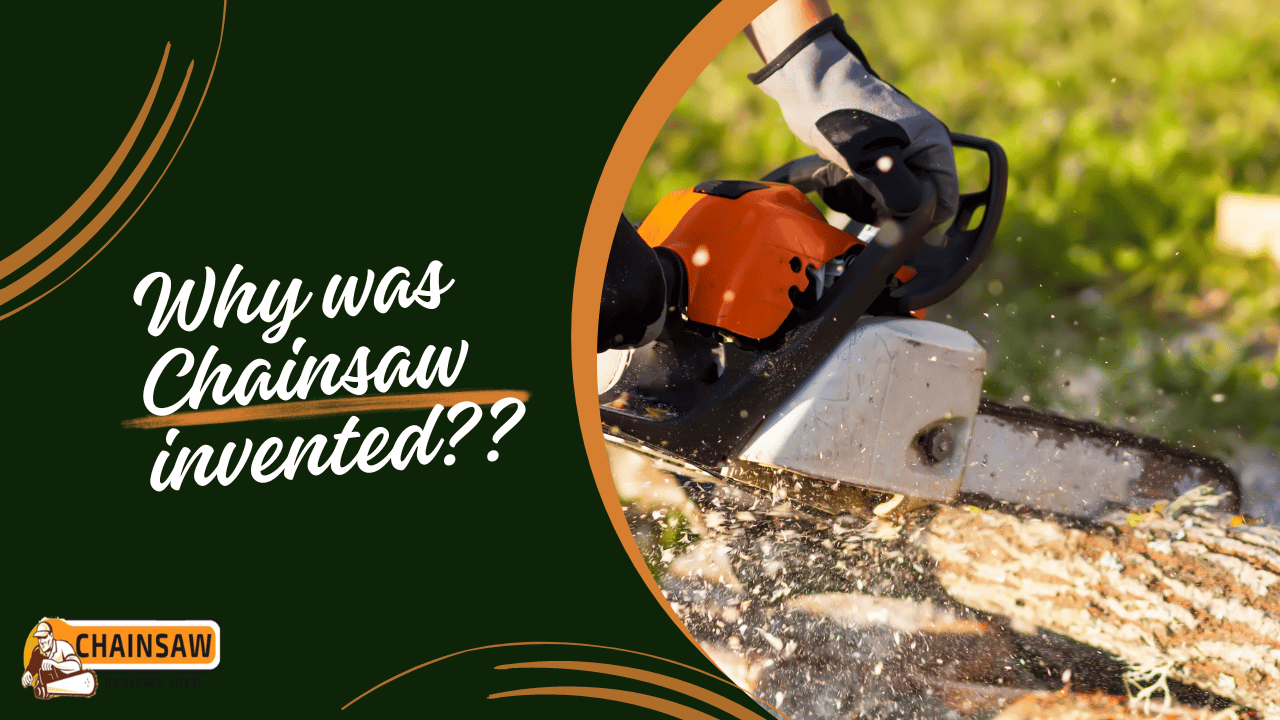Think about the last time you saw a chainsaw – was it in a horror movie, a lumberyard or perhaps during your backyard pruning?
Despite its occasional portrayal as an instrument of terror in popular culture, the chainsaw is actually one of the most important and transformative inventions in history.
This brings us to our fascinating question: Why was Chainsaw invented?
The invention of the chainsaw links back to unexpected origins and a very different purpose than what we commonly associate it with today.
Like many tools, it has evolved over time to become an integral part of construction, forestry and even ice sculpting!
So buckle up for a riveting journey that will take you back centuries, exploring how necessity truly became the mother of this powerful invention.
Early Uses Before Creation of Chainsaw
Contents
- 1 Early Uses Before Creation of Chainsaw
- 2 The Origins of Chainsaw Invention
- 3 Transition from Medicine to Forestry
- 4 Technological Advancements in Chainsaw Development
- 5 Conclusion
- 6 FAQs
- 6.1 Q: When was the chainsaw first used for logging purposes?
- 6.2 Q: Were early models of chainsaws as portable as they are now?
- 6.3 Q: How did Bernard Heine’s version of a Chainsaw look like?
- 6.4 Are there different types of chainsaws available today?
- 6.5 Q: Have safety measures changed since the original invention of the Chainsaw?
Before the advent of the chainsaw, humanity depended on conventional tools like axes and handsaws for forestry tasks.
These manual tools required a tremendous amount of elbow grease, sweat patience to fell a single tree, making logging an excessively grueling task.
The use of hand tools heavily impacted productivity due to their inefficiency and physical toll on loggers.
Imagine taking days or even weeks just to cut down large trees in forests!
This was the reality during those early times. It’s fascinating to consider how these traditional methods laid the groundwork for our current lumber technology.
This legacy underscores not only humanity’s relentless innovation but also puts into perspective how certain inventions truly revolutionize an industry.
The Origins of Chainsaw Invention
Embarking on a journey back to mid-1830s, we encounter two Scottish doctors, John Aitken and James Jeffray.
These gentlemen weren’t lumberjacks or sculptors who required heavy-duty tools; rather they resided in an entirely different field – the domain of medicine.
Yes, it might be hard to fathom initially, but the chainsaw that you’d typically associate with logging was first conceptualized for use in detailed surgical procedures!
The initial chainsaw these doctors developed wasn’t remotely close to our mind’s representation of today’s tool.
The evolution from this early prototype to our robust modern machine delineates a fascinating chronicle! It’s a unique tale that underscores how innovations can traverse diverse fields before finding their ultimate callings.
Interestingly, the initial design of the tool involved a hand crank for operational control, providing doctors and surgeons with an unprecedented level of dexterity and meticulousness during procedures. In this kept healthcare professionals in complete control regarding speed and depth, reducing potential risk factors!
This fertile period marked by experimentation was aptly labeled ‘Mechanical Renaissance‘, highlighting profound leaps taken to enhance technology.
As a result, functionality swiftly expanded beyond just surgical applications – especially revolutionizing lumbering practices at the time drastically.
Transition from Medicine to Forestry
Enter the transition phase, when chainsaws, originally designed to aid in childbirth operations, were repurposed for logging.
As audacious as it may sound now, pioneers of forestry identified potential in these medical tools and began a journey of transforming them into the widely recognized symbol of industrial logging we identify with today.
Forests presented new challenges that required adaptations to the chainsaw’s design. Enhanced power was needed to tackle dense wood instead of human bone.
The machine underwent major evolution: from a cumbersome handsaw-larger-than-human invention assisted by cranks to a mobile device driven by petrol engines or electricity.
This arc showcases how an instrument devised for life beginnings adeptly pivoted its use through innovative leaps: Swiftly cutting through complexities yet changing nature’s landscape forever – A remarkable testament to human ingenuity!
Technological Advancements in Chainsaw Development
Delving deeper into the technological milestones, the chainsaw landscape has revolutionized tremendously in the past few decades.
From massive, two-person operated beasts to lightweight, powerful tools you can lift with one hand – chainsaws have seen epic transformations.
Modern day saws exhibit advanced features such as anti-vibration systems that reduce operator fatigue, chain-brake systems for added safety, and automatic oilers that ensure smooth mechanism; these advancements have uplifted chainsaw safety and efficiency to unprecedented levels.
In the wave of rising environmental concerns comes an impressive leap in chainsaw tech – battery-powered chainsaws. Bye-bye gas guzzlers!
The 21st century has bid adieu to emission-spewing petrol models, embracing eco-friendly battery-powered alternatives which also operates more quietly and demand less maintenance.
This shift towards innovation not only benefits users but also marks a giant stride toward reducing greenhouse gas emissions- truly, chainsaw technology is cutting through conventions while we strive for a sustainable future.
Conclusion
In conclusion, chainsaws, as fierce as they may seem, are pivotal instruments of necessity and progress.
They transformed hard labor into a simple task, driving industrial progression while nurturing our coexistence with nature by enabling efficient logging and sustainable tree management.
Their invention was an immense leap forward in the world of forestry and beyond – spawning applications in multiple sectors that require swift heavy-duty cutting.
Moreover, the evolution of chainsaws is in itself a testament to human ingenuity. From motorized saws to electric and battery-operated versions; there is an epitome of adaptability.
This adaptability makes them relevant even today – a true reflection of how change can drive progress.
Whether designing landscapes or saving lives in emergency rescue operations; chainsaws prove it’s not just about why they were invented but rather how their versatility continues shaping our future.

